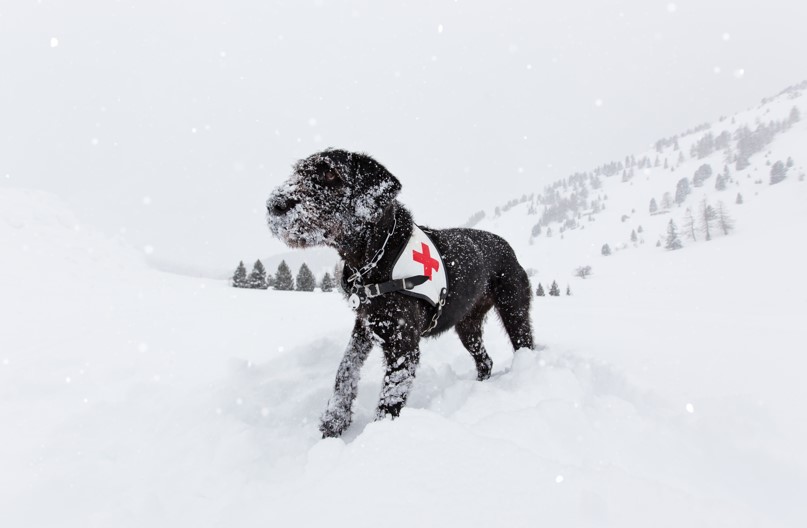
Retirement for SAR dogs is an issue that should not be taken lightly, and it is important to understand not only for SAR, military, and police dog handlers but also for the dogs themselves. The relationship between a handler and their SAR dog is special, as it has been developed through a strong bond over years of working together and risking their lives. It is said that the dog can read the thoughts of its handler, while the handler can read the mind of the dog.
To ensure a successful retirement for their beloved companion, those in law enforcement or SAR must be aware of the measures they need to take.
SAR dogs are specially trained animals used for search and rescue operations. These dogs are highly trained to find lost people, evidence, or objects in difficult terrain and weather conditions.
They are also used to detect explosives and drugs. SAR dogs have an incredible sense of smell and can detect scents from far away. They can work in extreme temperatures, and can even work underwater.
SAR dogs are incredibly loyal and can be an invaluable asset in search and rescue operations. They can locate people in a fraction of the time it would take humans, making them an invaluable resource in emergencies.
SAR dogs are also loyal and hardworking and can bond with their handlers for years.
As they age, these dogs may start to show physical signs of aging such as decreased vision, slower reflexes, and stiff joints. Along with these physical alterations often come mental and emotional changes such as a decrease in energy levels or an apathy towards work. Furthermore, it is challenging to find a suitable replacement for a retiring SAR dog since the profession needs them to meet certain standards.
For all of these reasons, understanding the appropriate retirement steps for SAR dogs is essential in making sure this loyal breed gets the recognition and appreciation they deserve.
Retiring a SAR dog is an incredibly difficult process, as the bond between the handler and the dog has been built over many years of working together. It is important to ensure that the process is as smooth as possible for both the handler and the dog.
To begin, it is important to allow the dog to participate in short problems and hasty searches in training if possible. This will keep the old dog happy and included, and help to ease the transition. Additionally, it is important to interview a breeder for the next dog, to ensure that the dog will be suitable for SAR work. The transition between the two dogs should be handled with care, and the old dog should be included in training sessions to keep him feeling included.
Here are some other tips:
By following these tips, handlers can ensure a successful retirement for their SAR dogs, and ensure that their loyal and hardworking companion is taken care of.
Once a SAR dog has retired, it is important to ensure that the dog is taken care of properly. This means providing regular check-ups with a veterinarian, ensuring that the dog has a comfortable and safe environment, maintaining a healthy diet, and keeping the dog active.
Please remember that a retired SAR dog is still a loyal and hardworking companion, and should be treated with the same respect and love that was given when the dog was working. Providing a comfortable and safe environment, and maintaining a healthy diet and activity level, handlers can ensure that their retired SAR dog is taken care of and happy.
Q: What types of jobs are available for handlers who decide not to train another dog?
A: For those with prior experience in SAR, there are plenty of roles that don't require a canine teammate; research and administrative jobs can offer just as much challenge and job satisfaction. The knowledge and expertise of former dog handlers is still a valuable asset.
Q: What should be taken into account when looking for a breeder for a new SAR dog?
A: A successful match depends on finding the right breeder for the job. Interviews should be conducted to make sure the pup is up to the standards needed for SAR work - seeking someone who specializes in working dogs as opposed to show breeds is recommended.
Q: How do we ensure retired SAR dogs stay comfortable and happy?
A: Retired SAR dogs need regular vet visits, a safe environment, nutritious meals, and activities to keep them occupied. They deserve lots of love and respect - just like they did while they were working!
Q: What is the history of search and rescue dogs?
A: The use of search and rescue dogs can be traced back to the use of Red Cross dogs during World War I. They were initially trained to bark at the location of wounded soldiers, but this method was changed to picking up a designated item. Today, search and rescue dogs have been used in various disasters around the world, such as earthquakes, and have proven to be a valuable asset in saving lives and recovering bodies.
